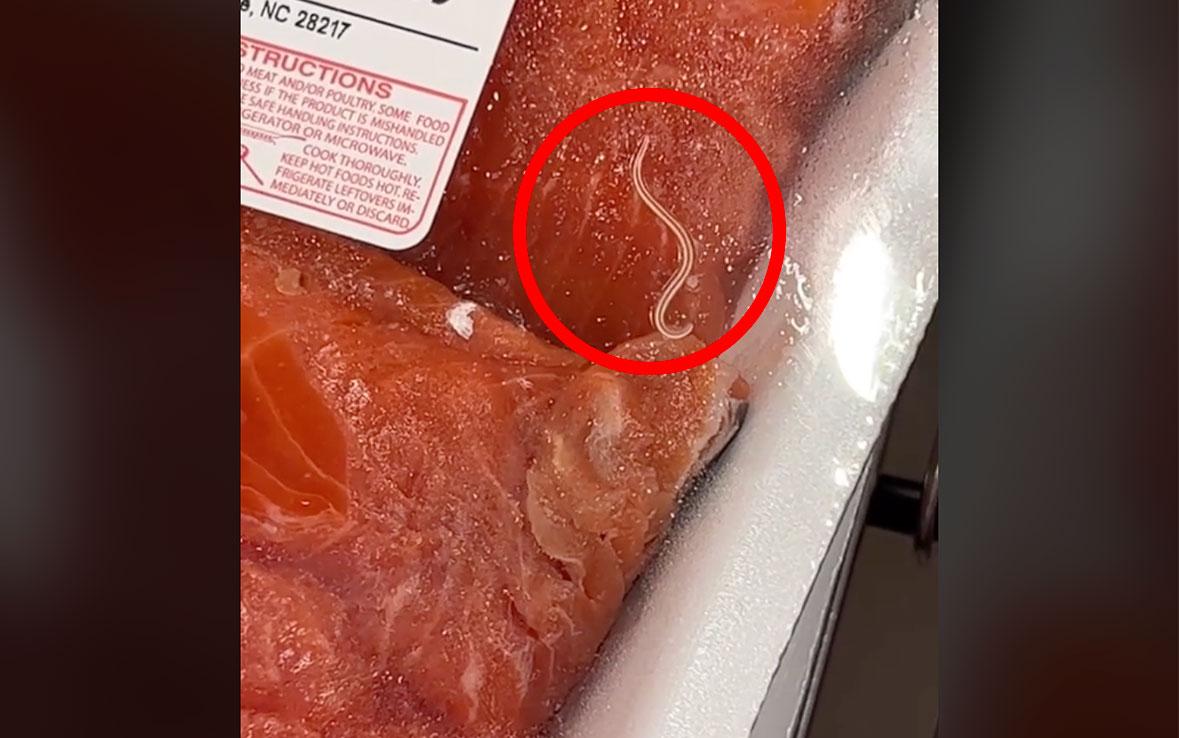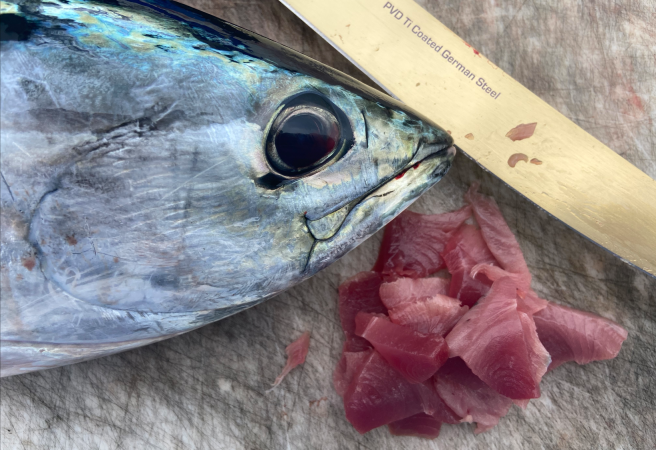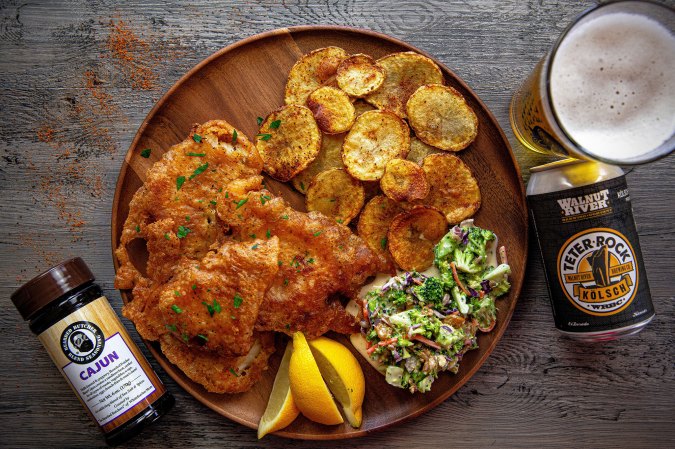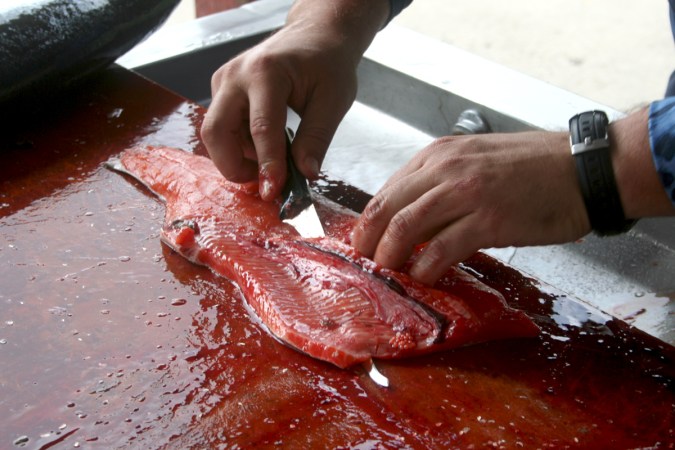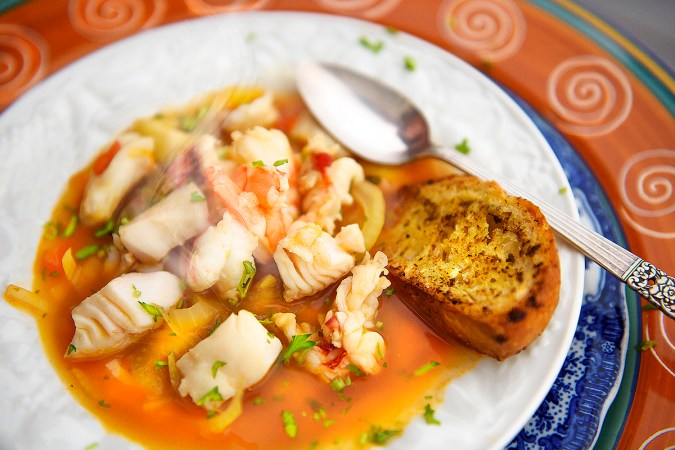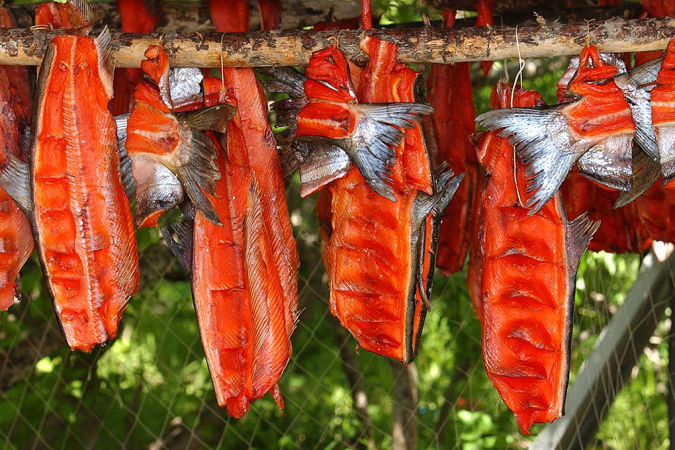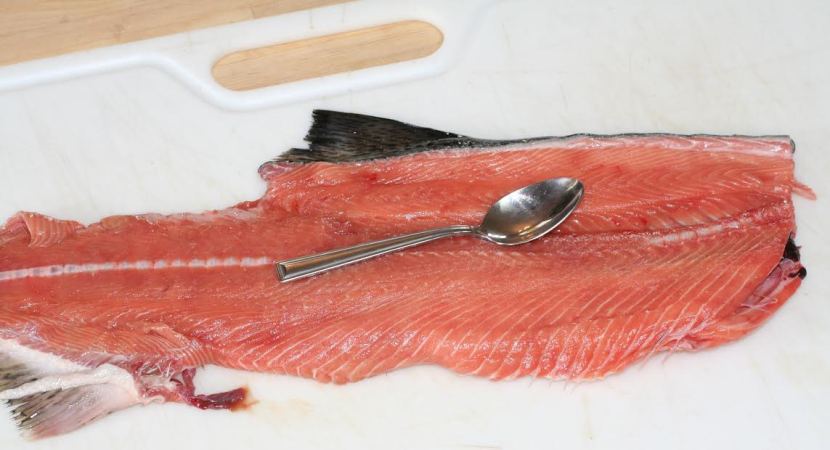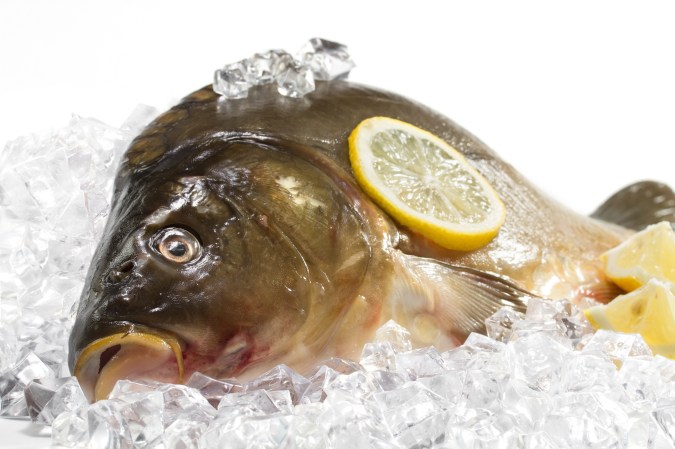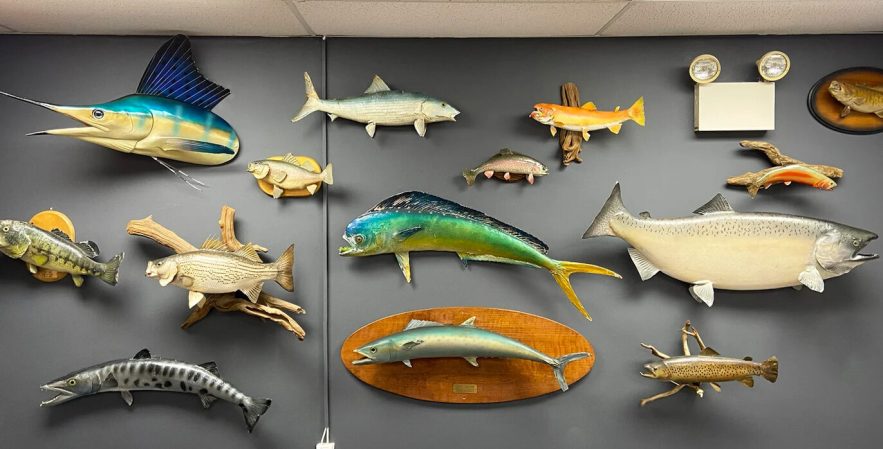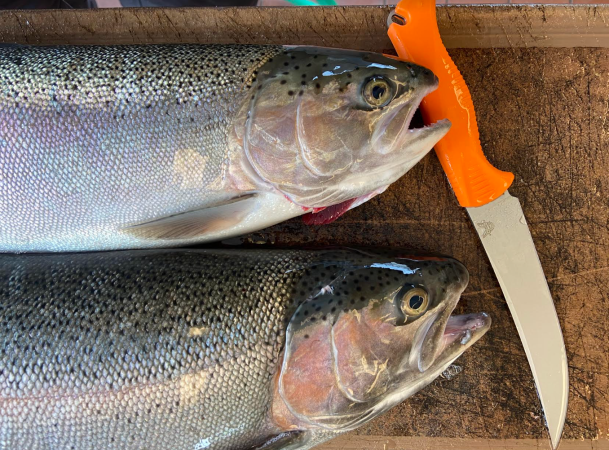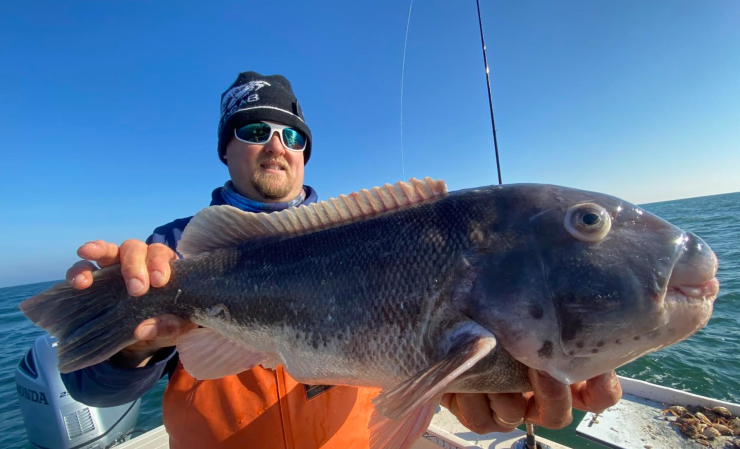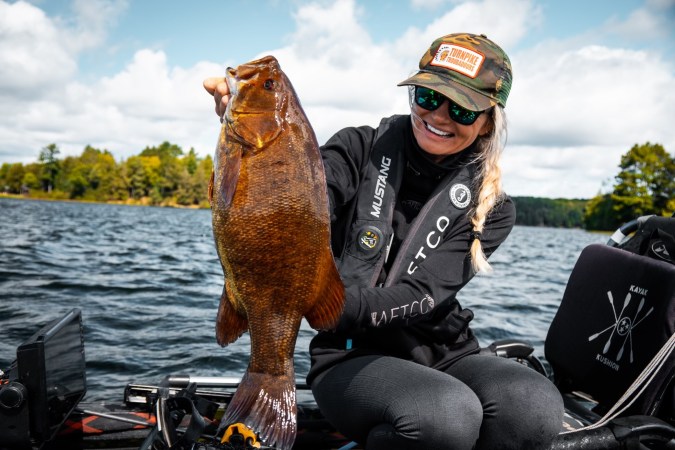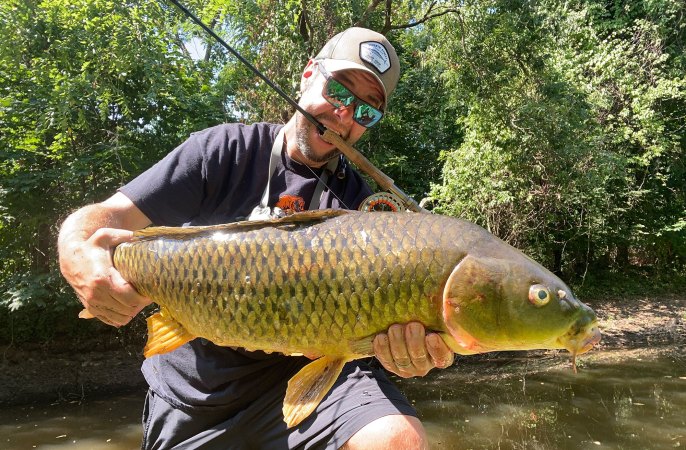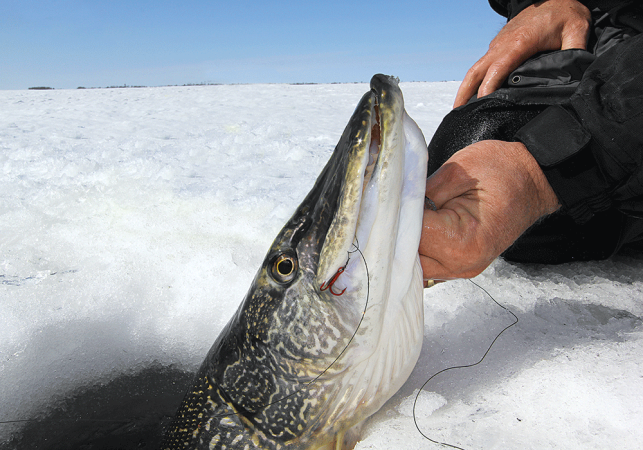Here’s the scenario. You drop by the local fish market and treat yourself to something expensive. Perhaps a piece of halibut or fresh mahi or maybe a swordfish steak. You get it home, prep all your ingredients, but when you cut the fish to portion it out, a fat, orange live worm pops out of the meat. What’s your reaction? Are you horrified? Do you take it back and make a scene? Or do you pull the parasitic worm—or worms—out and continue enjoying your delicious meal?
According to a story on Dailydot.com, shopper Rachel Lyn recently went viral on TikTok after filming live worms crawling inside a sealed package for fresh salmon fillets at Costco. Now granted, Costco may not rank highly on the list of quality fishmongers, but I’m willing to bet many of you have bought seafood at similar stores.
@msrachellyn Live parasites in the salmon today at #costco ♬ Oh No – Kreepa
The article also mentions that Costco has apparently been sued in the past over worms in halibut, and the same goes for Whole Foods after a consumer found worms in their salmon. The reality, however, is that while you may not want to believe it, a large percentage of the fish you buy or catch had or has worms. Sometimes you see them, sometimes you don’t, but guess what? It’s not abnormal nor that big a deal.
Wiggle Room
For the record, I’m not suggesting that I’m not turned off when I find worms in my fish, but I’m not so turned off that it forces me to waste the fillets. This way of thinking, I’ve noticed, is far more common among anglers than non-anglers, simply because fishermen who harvest their catch for food are more in tune with the nature of things.
The worms most commonly found in fish—including that Costco salmon—are anisakid nematodes, often referred to as herring worms or cod worms. Similar worms are routinely found in freshwater species as well. According to the story, 75 percent of wild Pacific salmon are infected with them, but they’re certainly not confined to the West Coast.
I vividly remember my first cod trip years ago off Rhode Island. We did very well, and I couldn’t wait to bring the fresh cod fillets to my wife (girlfriend at the time) and prepare them for her and her grad school roommates. I was warned, however, that there would be worms in the meat. The charter captain told me it’s rarer to find a cod without worms than with them. He suggested that I soak a paper towel in freshwater and wrap the fillets overnight in the refrigerator. This, he said, would draw some worms out or at least bring them to the surface of the fillets where I could easily grab them and gently pull them out. Thankfully it worked, because had any of the ladies I was cooking for seen one of those bright orange wrigglers, I would have been toast.

Wild Fish Have Worms
What’s ironic about people being so put off by worms in fish is that we live in a culture enamored with “wild caught” and organic meat. I like organic food, too, often buying more tomatoes and other vegetables from local farm stands than the grocery store. But I know the risk is greater for these veggies to have bugs. Unless you want to eat nothing but tank-raised tilapia or trout, wild fish have “bugs,” too.
Sellers of seafood go to great lengths to de-worm their fish, but occasionally, it’s inevitable that a few nematodes are going to slip through the cracks. As far as lawsuits are concerned, that’s just foolish, because a live worm in a fish actually suggests it’s fresh and never been frozen, and though it’s easy to understand why consumers would jump to the conclusion that the fish is rotten or has been mishandled, the truth is that that you’ve probably eaten many worms already. Eating fish with worms likely won’t have an adverse effect on you.
Read Next: How to Fry Fish
Is Eating Wormy Fish Dangerous?
The fact is that if your fish is well-cooked, you have nothing to worry about. Cod worms are tasteless and sort of blend in with the flesh when cooked.
Where you can get in trouble is if you intend to serve fish raw. Of all the factions of chefs that need to be most cognizant of worms, it’s sushi chefs, but even here it’s more about aesthetics than doing harm. Ingesting a live anisakid nematode can cause stomach discomfort, vomiting, and bloating, but other than a few rare instances, it is not life threatening. Under U.S. law, any fish that will be served raw must be frozen at a very low temperature in order to kill any potential parasites. Here’s what the Centers for Disease Control and Prevention recommends:
- Cooking Seafood in General
- Cook seafood adequately (to an internal temperature of at least 145°F).
- Freezing Fish
- At -4°F or below for seven days
- At -31°F or below until solid, and storing at -31°F or below for 15 hours
- At -31°F or below until solid and storing at -4°F or below for 24 hours
Fishermen, however, may sometimes skip this step. I’ve made homemade sashimi out of mahi-mahi, bonito, and tuna many times, and during the cleaning process I keep a sharp eye out for worms. In some cases, I’ve found knots of them in mahi, which I simply cut out. I do understand how the sight could give someone the heebie-jeebies, but you need to get your head around the idea that the worms will not hurt you. You don’t need to throw out perfectly good fish or worse, spend money on a silly lawsuit.

